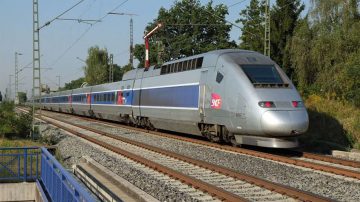
When new high-speed lines come on stream there’s always a modal shift by travellers.
The same is true whether it be Bordeaux to Paris, Munich to Berlin or Paris to Brussels amongst many.
Railway Gazette has examined a report by UBS (Union Bank of Switzerland) which has concluded the transfer from air to rail will be greater still once the present Covid-19 situation ends.
In short UBS’ analysis suggests more travellers will become “climate aware” and so will be expected to take to the rails. And crucially these will be for longer journeys both in terms of distance and travel time.
Its survey suggests that leisure travellers would be prepared to tolerate journey times of five or six hours.
“Business travellers in the EU [where most European high-speed lines are located] would accept four hours compared to a general consensus of two to three hours.”
However it could be said that a modal shift started to occur before Covid-19.
Consider there has already been significant passenger traffic growth on our existing Anglo-Scottish rail links which cannot be classified as high speed (a classification really reserved for those trains operating at 300km per hour or above).
Or the fact that eco-conscious Switzerland has already expanded international rail, and seeks to increase night train services (along with Austria).
As we reported in January Austria’s OEBB launched a new Nightjet between Vienna and Brussels. And there were plans (which will surely be postponed now) to operate Nightjet from Vienna to Amsterdam.
OEBB sees future in Nightjet and has commissioned a new generation of rolling stock.
And in December TGV Lyria (a joint venture between SNCF and SBB) decided to capitalise on ‘flight shame’ by expanding capacity between France and Switzerland.












